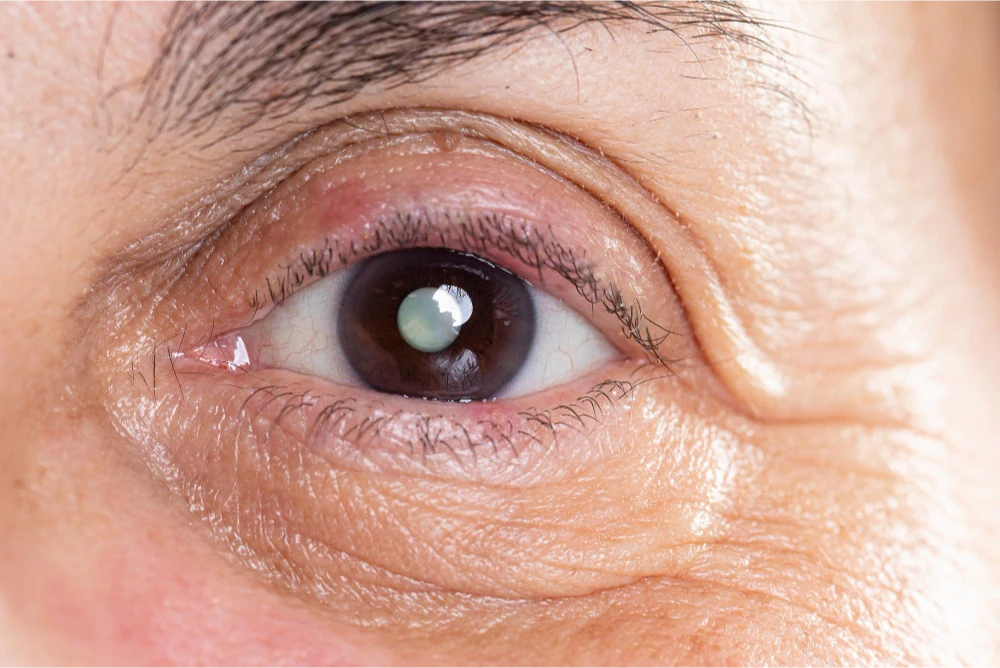Cataracts are a prevalent eye condition affecting millions worldwide, especially as individuals age. Learning about cataracts, what causes them, how to treat them, and the surgery needed helps keep your eyes and vision healthy.
Experience clear vision again with the experts of cataract surgery, designed to restore your sight and enhance your quality of life.
This guide will cover the key points about cataracts, such as signs and treatment options.
What Are Cataracts?
Cataracts involve the clouding of the eye’s lens, leading to reduced vision. Normally, the lens is clear, but when it becomes opaque, it hinders light from passing through to the retina, resulting in blurred or impaired vision. This condition can disrupt everyday tasks such as reading, driving, and facial recognition.
Symptoms of Cataracts:
- Blurred vision
- Difficulty seeing at night
- Sensitivity to light and glare
- Seeing halos around lights
- Frequent changes in eyeglass prescriptions
- Fading or yellowing of colors
Cataracts typically develop gradually and can affect one or both eyes. Without treatment, they can cause severe vision impairment or blindness.
Causes of Cataracts
Cataracts are mainly linked to aging. As one ages, the proteins in the eye’s lens start to degrade and cluster together, creating cloudy areas. However, aging is not the sole factor; other contributors include:
- Medical Conditions: Diabetes heightens the risk of cataracts, along with other conditions such as obesity and hypertension.
- Lifestyle Factors: Smoking and excessive alcohol consumption can accelerate cataract formation.
- Prolonged Sun Exposure: Ultraviolet (UV) radiation from the sun can damage lens proteins, leading to cataracts. Wearing UV-blocking sunglasses can mitigate this risk.
- Medications: Long-term use of corticosteroids and other drugs can increase cataract risk.
- Eye Injuries: Trauma to the eye can result in cataract development, sometimes years later.
- Genetics: A family history of cataracts can increase susceptibility.
What Do Cataracts Look Like?
An optometrist or ophthalmologist can detect cataracts during an eye examination. Initially, cataracts may not be visible to the naked eye, but as they progress, the lens might develop a yellowish or brownish tint. In advanced stages, the entire lens can become opaque, severely affecting vision.
Types of Cataracts
- Nuclear Cataracts: Form in the lens’s center and are associated with aging.
- Cortical Cataracts: Begin at the lens’s edges and move towards the center.
- Posterior Subcapsular Cataracts: Develop at the back of the lens and often progress more quickly than other types.
Cataract Surgery: What to Expect

When cataracts start to impede daily activities, cataract surgery is usually recommended. This is one of the most common and successful surgeries globally, involving the removal of the cloudy lens and its replacement with an artificial intraocular lens (IOL).
Preparation for Surgery:
- Eye Exam: A thorough eye examination to determine the cataract’s severity and measure the eye for the IOL.
- Medical Evaluation: To ensure the patient is fit for surgery.
- Pre-Surgery Instructions: Guidelines on preparing for surgery, including medications to avoid.
During the Surgery:
- Anesthesia: Local anesthesia is typically used to numb the eye. The patient remains awake but feels no pain.
- Procedure: A small incision is made in the eye to remove the cloudy lens, followed by the insertion of the IOL to restore clear vision.
- Duration: The procedure usually takes 15-30 minutes per eye, and most patients can return home the same day.
Recovery:
- Post-Surgery Care: Prescribed eye drops to prevent infection and aid healing. Following the doctor’s instructions is crucial.
- Follow-Up Appointments: Regular check-ups to monitor healing and vision improvement.
- Activity Restrictions: Avoiding strenuous activities and heavy lifting for a few weeks to ensure proper healing.
How Long Does Cataract Surgery Take?
Cataract surgery itself is relatively brief, generally lasting between 15 and 30 minutes per eye. However, patients should allocate a few hours at the surgical center for pre-operative preparations and post-operative recovery. Most patients observe vision improvement within a few days, though full healing can take several weeks.
Conclusion
Cataracts are a common eye condition that can significantly impact daily life. By understanding their nature, causes, and treatment options like surgery, individuals can better manage their eye health. Regular eye exams, a healthy lifestyle, and UV-protective sunglasses can reduce the risk of cataracts. If symptoms arise, consulting an eye doctor for appropriate treatment, potentially including surgery, is crucial.
Maintaining clear vision is essential for enjoying life, and addressing cataracts promptly can restore sight and enhance quality of life.
Secure Your Vision with Vision Gallery!
Don’t wait – book your appointment now and take the first step towards a lifetime of healthy vision. At Vision Gallery, we specialize in personalized care and expertise to safeguard your eye health. Whether you’re dealing with cataracts or other eye concerns, our team is here to help.
Contact Us Today: Email: info@visiongallerykaty.com | Phone: 281-377-0219






